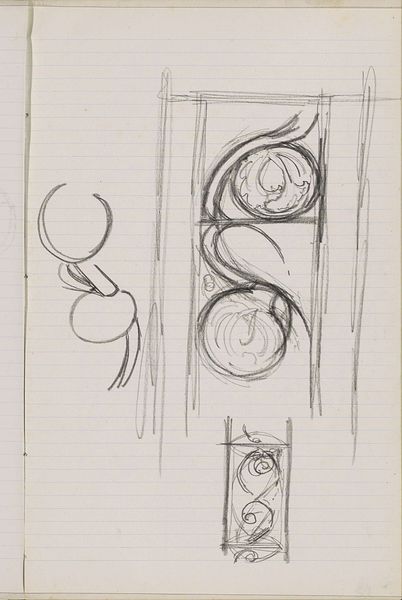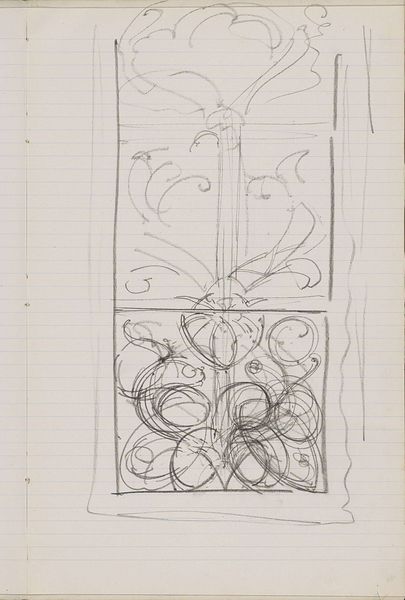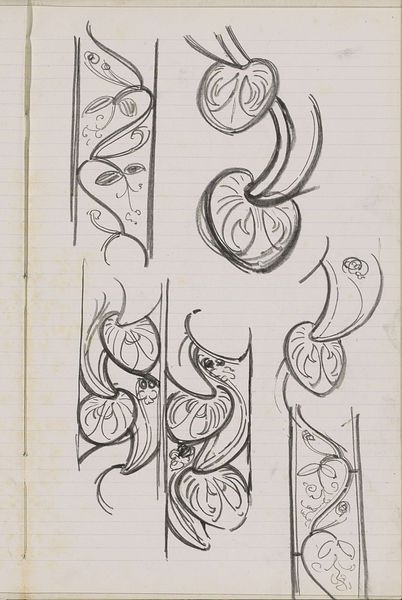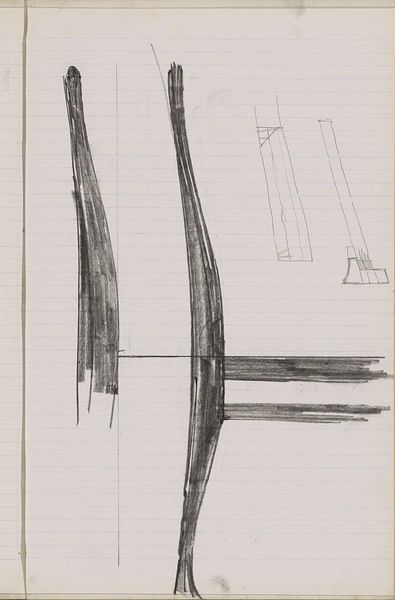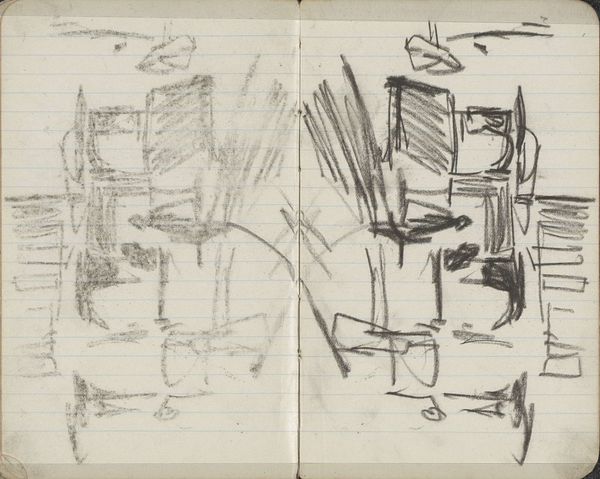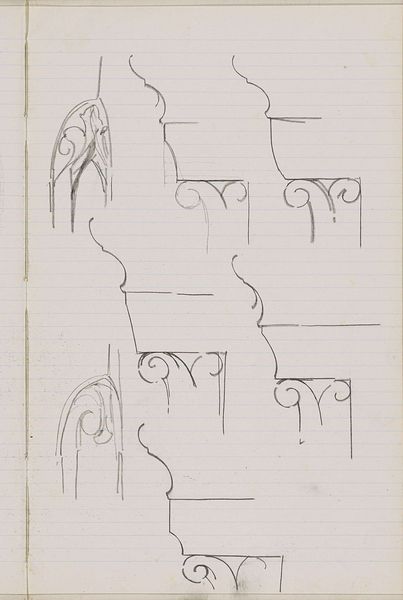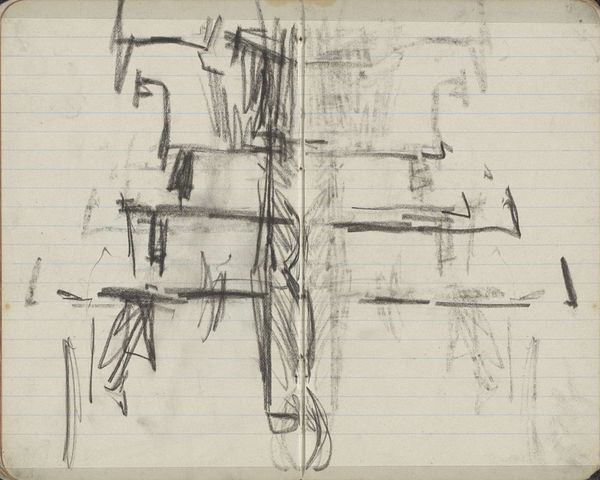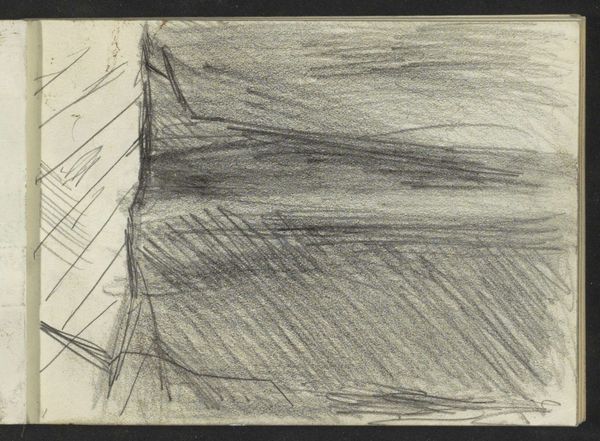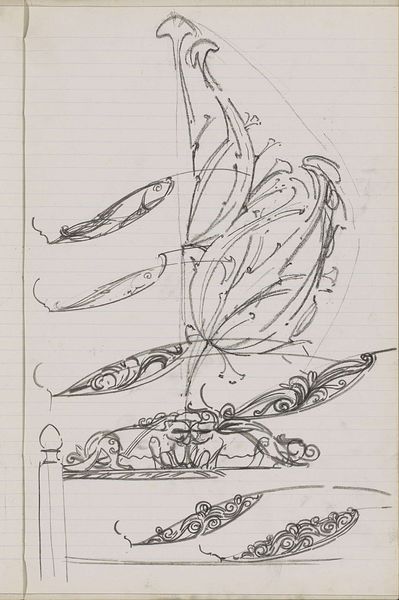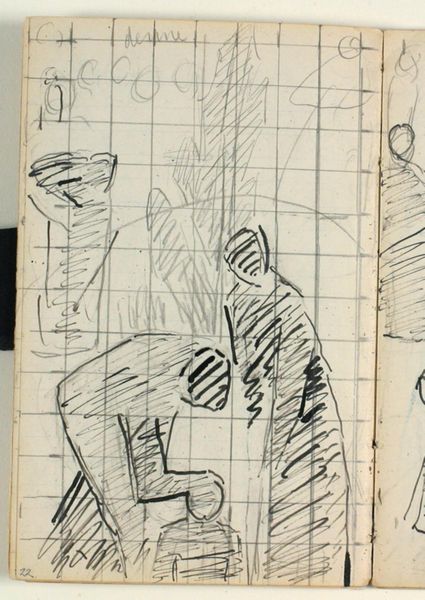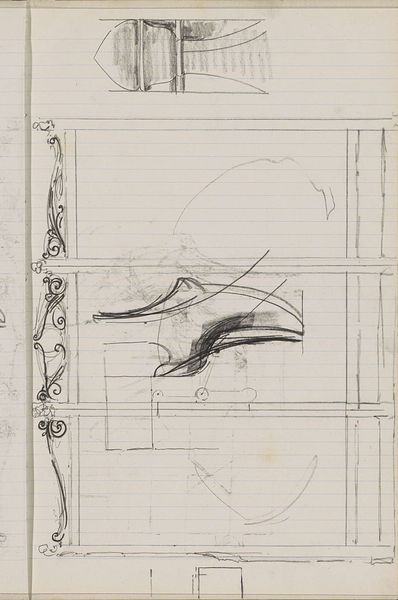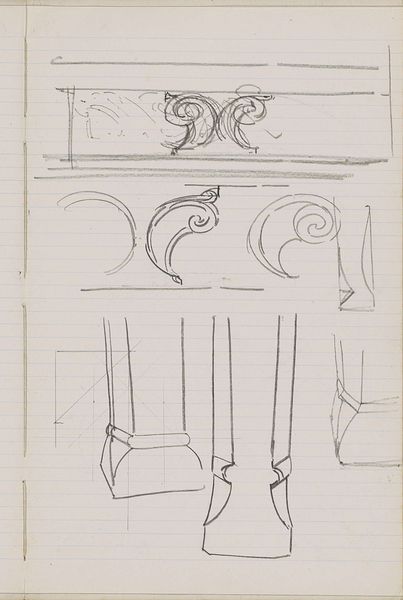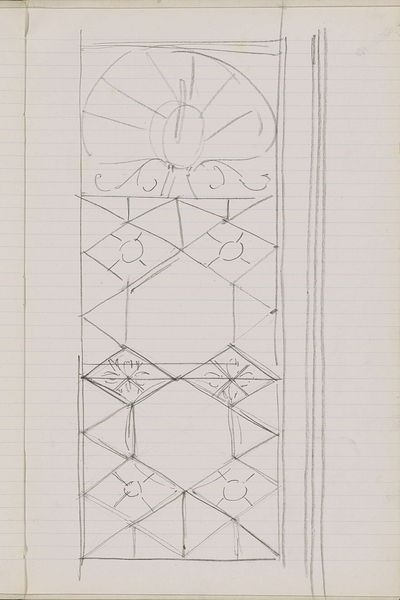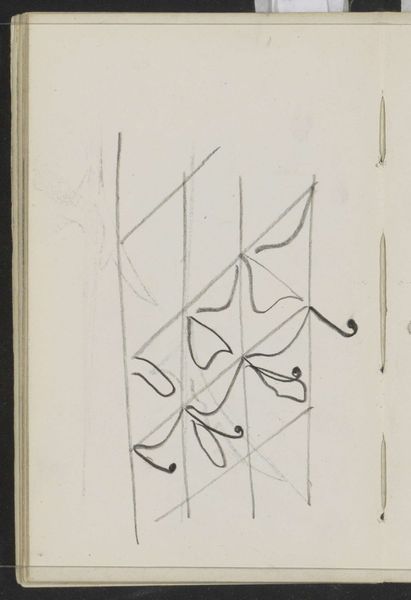
drawing, pencil
#
drawing
#
art-nouveau
#
quirky sketch
#
pen sketch
#
personal sketchbook
#
idea generation sketch
#
sketchwork
#
ink drawing experimentation
#
pen-ink sketch
#
pencil
#
line
#
sketchbook drawing
#
sketchbook art
#
initial sketch
Copyright: Rijks Museum: Open Domain
Editor: Here we have Gerrit Willem Dijsselhof's "Ornamenten met bloemen," created around 1901. It's a drawing, a sketch really, done with pencil and ink. It feels so raw, like we’re looking at the artist’s initial thoughts. What stands out to you about this piece? Curator: I'm struck by the inherent tension. We see 'ornament,' hinting at luxury and perhaps mass production, yet here it is, hand-drawn. What was the process? Was Dijsselhof intending these sketches for mass production, or were they studies in material exploration, defying the rigid distinction between high art and craft prevalent at the time? Editor: That’s a good point, especially since it is art nouveau. There's this desire to create accessible beauty through design. So how did this affect artists' labor and craft? Curator: Exactly! Art Nouveau was consumed by all classes. Consider the means of production - the pencil and ink readily available, democratizing design. But it also prompts a reflection: were these designs meant for wallpaper, textiles, ceramics? Understanding its application sheds light on how these objects became accessible commodities. Editor: So you're saying, looking at it through the lens of materials helps us understand both the artist's intentions and how art becomes part of everyday life. Curator: Precisely. This seemingly simple sketch prompts crucial questions about material culture, labour, and consumption during the Art Nouveau movement. This piece isn’t just an aesthetic object; it's a document reflecting socio-economic currents. It is the foundation upon which larger decorative pieces were constructed. Editor: I hadn't considered the socio-economic aspect so directly. Thinking about where the sketches would go really changes the way I see them. Curator: Indeed! Focusing on material production shifts the narrative from pure aesthetic appreciation to a broader engagement with history, labor, and consumption. This shift broadens what we call ‘art.’
Comments
No comments
Be the first to comment and join the conversation on the ultimate creative platform.
